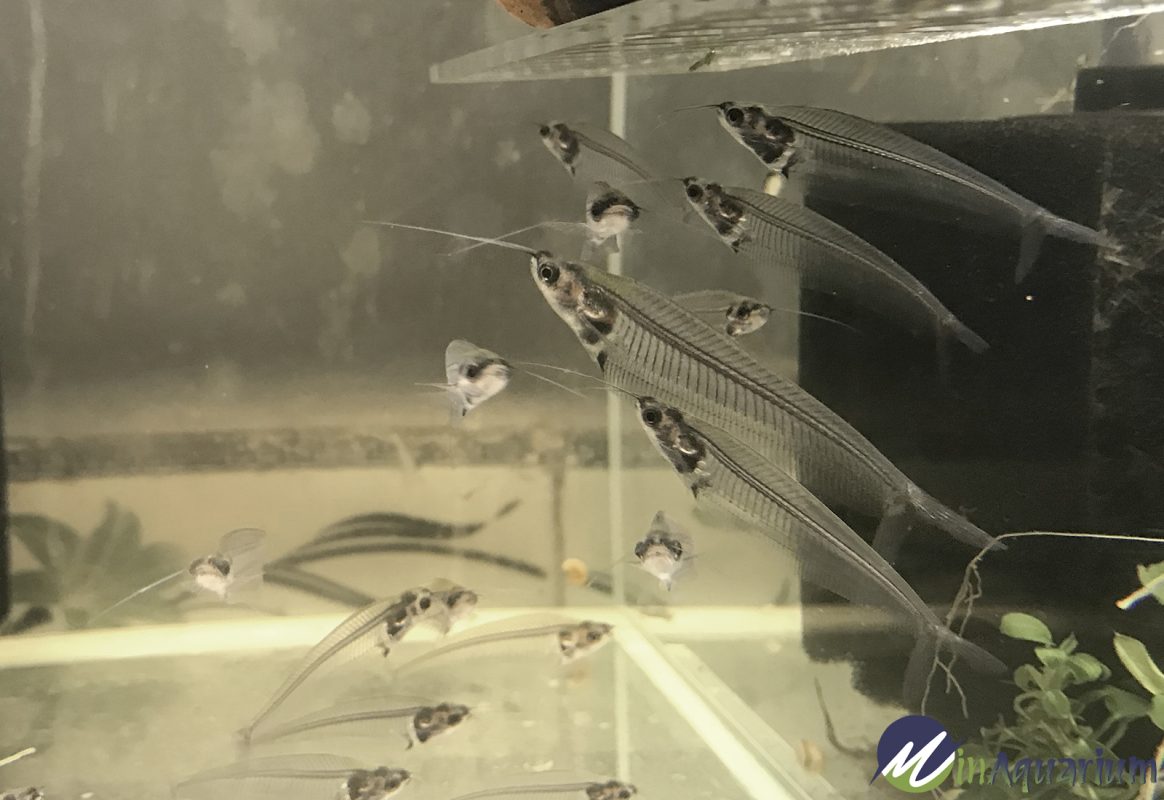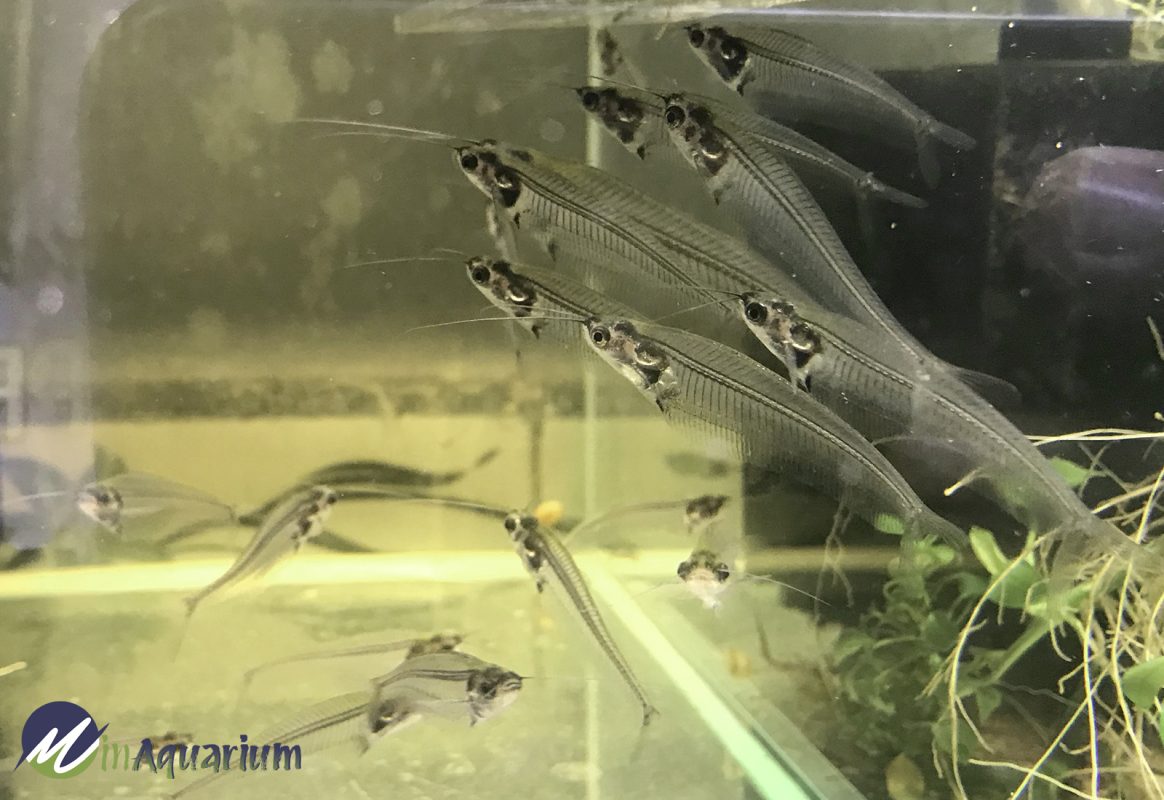Blogs
Kryptopterus vitreolus: The Enigmatic Glass Catfish
Kryptopterus vitreolus, commonly known as the Glass Catfish, is a small species of Asian catfish that captivates with its unique anatomy and enigmatic nature. This translucent fish, hailing from the freshwater habitats of Thailand, possesses a transparent body that allows for an unobstructed view of its internal organs. Its scaleless exterior further enhances its ethereal appearance, making it a captivating addition to any aquarium.
Taxonomy and Endemism
Classification
- Kingdom: Animalia
- Phylum: Chordata
- Class: Actinopterygii
- Order: Siluriformes
- Family: Siluridae
- Genus: Kryptopterus
- Species: Kryptopterus vitreolus
Origin and Distribution
Kryptopterus vitreolus is endemic to Thailand, primarily inhabiting rivers south of the Isthmus of Kra that drain into the Gulf of Thailand, as well as river basins in the Cardamom Mountains. Its natural habitat consists of slow-moving, clear waters with abundant vegetation.

Physical Characteristics
Transparency and Anatomy
The most striking feature of the Glass Catfish is its transparent body, which allows for unparalleled visibility of its internal organs, including the beating heart, functioning gills, and digestive system. This unique characteristic stems from the absence of scales and a reduced number of melanophores, the cells responsible for pigmentation.
Size and Shape
Kryptopterus vitreolus is a relatively small fish, with standard lengths ranging up to 8 cm, but typically reaching around 6.5 cm in total length. Its body is slender and elongated, with a slightly flattened head and a forked tail fin.
Behavior and Ecology
Peaceful Demeanor
The Glass Catfish is a peaceful community fish that is not known to harm other species. It is a shoaling fish that prefers to live in groups of at least four individuals, but preferably six or more. When kept in a harmonious environment, they exhibit playful and active behaviors.
Habitat Preferences
In their natural habitat, Glass Catfish inhabit slow-moving, clear waters with abundant vegetation. They are often found in shallow areas, where they can easily access food sources and shelter from predators.
Survival Tactics
Kryptopterus vitreolus has developed a remarkable survival tactic: its ability to “disappear” in murky waters. The fish’s transparent body and reduced number of melanophores allow it to effectively camouflage itself, making it difficult for predators to detect.
Care and Husbandry
Tank Requirements
Glass Catfish require a reasonably large tank that is well-established with plenty of live plants and a good flowing current from the filter. The tank should be at least 10 gallons in size and should be equipped with a tight-fitting lid to prevent the fish from jumping out.
Water Parameters
Kryptopterus vitreolus prefers slightly acidic to neutral water with a pH range of 6.0-7.5 and a temperature range of 75-80°F. It is important to maintain clean water with low levels of ammonia and nitrite.
Feeding
Glass Catfish are omnivorous and will readily accept a variety of foods. They enjoy prepared foods, live brine shrimp, and bloodworms. It is important to note that this catfish is not very good at collecting food from the aquarium floor, so feeding as you would for characins and barbs is recommended.
Health and Disease
Common Diseases
Glass Catfish are generally hardy fish, but they are susceptible to certain diseases, including ich, fin rot, and bacterial infections. It is important to quarantine new fish before adding them to the main tank and to maintain good water quality to prevent disease outbreaks.
Preventive Measures
To ensure the health and longevity of Glass Catfish, it is essential to provide them with a suitable habitat, a balanced diet, and regular water changes. By closely monitoring their behavior and water parameters, any potential health issues can be detected and addressed promptly.
FAQs
1. Are Glass Catfish difficult to care for?
Glass Catfish are relatively easy to care for, provided their specific habitat requirements are met. They are peaceful community fish that are not overly demanding in terms of food or water quality.
2. What is the ideal tank size for Glass Catfish?
A tank of at least 10 gallons in size is recommended for Glass Catfish, with a longer tank being preferable to accommodate their active swimming behavior.
3. What is the best way to feed Glass Catfish?
Glass Catfish are omnivorous and will readily accept a variety of foods. Feeding them a combination of prepared foods, live brine shrimp, and bloodworms will ensure a balanced diet.
4. Are Glass Catfish social fish?
Yes, Glass Catfish are very social fish and prefer to live in shoals of at least four individuals. Keeping them in a group will promote their well-being and reduce stress.
5. What are the signs of a healthy Glass Catfish?
Healthy Glass Catfish are active, have clear eyes and fins, and respond well to stimuli. They should also have a healthy appetite and should not show any signs of disease.
6. What are the potential health risks for Glass Catfish?
Glass Catfish are susceptible to certain diseases, including ich, fin rot, and bacterial infections. Maintaining good water quality and quarantining new fish before adding them to the main tank can help prevent disease outbreaks.
Conclusion
Kryptopterus vitreolus, the Glass Catfish, is a fascinating species that offers a unique and rewarding experience for aquarists. By understanding their specific care requirements, you can provide them with a thriving environment where they can showcase their ethereal beauty and enigmatic nature. Remember to prioritize their well-being by maintaining a suitable habitat, offering a balanced diet, and monitoring their health closely. Embrace the joy of observing these captivating fish and delve into the wonders of their transparent world.
Key Takeaways
- Kryptopterus vitreolus is a small, transparent catfish native to Thailand.
- Their unique lack of scales and pigments gives them their ethereal “glass” appearance.
- Glass Catfish are peaceful shoaling fish that prefer groups of at least four individuals.
- They require a well-planted tank with good water flow and a pH range of 6.0-7.5.
- Omnivorous and easy to feed, Glass Catfish enjoy a variety of prepared foods, live brine shrimp, and bloodworms.
- Regular water changes, proper nutrition, and monitoring their health are essential for their well-being.

